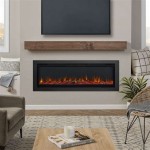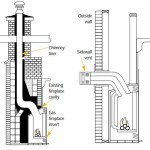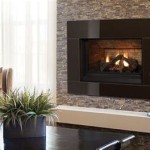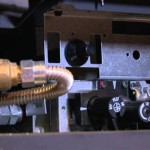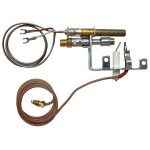Gas Fireplace Vent Clearance To Combustibles In Georgia
The installation of a gas fireplace in Georgia, like in any other jurisdiction, necessitates adherence to specific safety regulations and guidelines. A crucial aspect of this installation process involves maintaining proper vent clearance to combustibles. Failure to comply with these clearance requirements can lead to fire hazards, property damage, and potentially, serious injury or loss of life. This article aims to provide a comprehensive overview of gas fireplace vent clearance requirements to combustibles in Georgia, emphasizing the importance of understanding and adhering to these standards.
Combustibles, in the context of gas fireplace installations, refer to any material that is capable of igniting and burning. This includes common building materials such as wood, drywall, insulation, fabrics, and even some plastics. The heat generated by a gas fireplace vent, particularly during prolonged use, can easily ignite these materials if they are located too close to the vent. Therefore, maintaining the prescribed clearance distances is a non-negotiable aspect of safe fireplace operation.
Georgia's building codes, which are based on nationally recognized standards such as the International Fuel Gas Code (IFGC) and the National Fire Protection Association (NFPA) standards, provide the framework for gas fireplace installations. These codes outline specific requirements for vent types, materials, and the necessary clearances from combustible materials. Local jurisdictions within Georgia may also have additional or more stringent requirements, so it is imperative to consult with local building officials before commencing any installation project.
Proper venting is essential for the safe and efficient operation of a gas fireplace. It serves to remove harmful combustion byproducts, such as carbon monoxide, from the living space. The type of venting system used depends on the type of gas fireplace and the manufacturer’s specifications. Common venting systems include direct vent, B-vent, and vent-free systems. Each type has specific clearance requirements that must be followed meticulously.
The consequences of improper vent clearance can be severe. Overheating of combustible materials can lead to smoldering, which may eventually ignite. This can result in structural fires, endangering occupants and causing significant property damage. Furthermore, improper venting can lead to the buildup of carbon monoxide, an odorless and colorless gas, which can be fatal if inhaled in sufficient concentrations. Therefore, prioritizing safety through strict adherence to clearance regulations is paramount.
Understanding Vent Types and Their Clearances
Different types of gas fireplace venting systems require different clearance distances from combustible materials. Understanding these differences is essential for a safe and compliant installation. The three most common vent types are direct vent, B-vent, and vent-free systems. Each operates differently and therefore has unique clearance needs.
Direct Vent Systems: Direct vent systems are sealed combustion units that draw air from outside the home for combustion and exhaust combustion gases directly outside through a coaxial vent pipe. This system consists of two pipes, one within the other. The inner pipe exhausts the combustion gases, while the outer pipe brings in fresh air. Because the outer pipe helps to cool the inner pipe, direct vent systems typically require smaller clearances compared to B-vent systems. However, specific clearances still apply and must be determined by the manufacturer’s instructions and local building codes. These clearances can vary depending on the vent pipe's diameter and the installation location. Pay close attention to vertical and horizontal clearances from walls, ceilings, and overhangs.
B-Vent Systems: B-vent systems, also known as natural vent systems, rely on natural convection to exhaust combustion gases. They use a double-walled metal pipe, known as B-vent, that is designed to resist corrosion and heat. B-vent systems typically require greater clearances to combustibles than direct vent systems due to the higher surface temperatures of the vent pipe. Common clearance requirements for B-vent systems are often specified as a certain number of inches from combustible materials, such as 1 inch or more. It is crucial to consult the manufacturer's instructions and local codes to determine the exact clearance requirements for your specific B-vent system. Ensure that the vent pipe is properly supported and that it maintains consistent clearance throughout its entire length.
Vent-Free Systems: Vent-free gas fireplaces do not require venting to the outside. They are designed to burn fuel very efficiently, minimizing the production of combustion byproducts. Although they do not have a traditional vent pipe, vent-free systems still generate heat, and therefore require clearances to combustible materials surrounding the fireplace unit itself. These clearances are typically specified in the manufacturer's instructions and must be strictly followed to prevent overheating and potential fire hazards. Additionally, vent-free systems are subject to specific regulations regarding room size, ventilation, and carbon monoxide detectors. It is essential to verify that vent-free fireplaces are permitted in your jurisdiction and that you comply with all applicable safety regulations.
Regardless of the vent type, it is crucial to always refer to the manufacturer's installation instructions and local building codes for specific clearance requirements. These instructions will provide detailed information on the minimum distances required between the vent and combustible materials, taking into account the specific characteristics of the fireplace and the venting system. Failure to adhere to these instructions can lead to dangerous conditions and void the manufacturer’s warranty.
Identifying Combustible Materials
Accurately identifying combustible materials is essential for ensuring proper vent clearance. While some materials are obviously combustible, others may not be immediately apparent. A thorough assessment of the surrounding area is necessary to identify all potential fire hazards.
Common Building Materials: Wood is one of the most common combustible building materials. This includes framing lumber, plywood, and wood paneling. Drywall, while fire-resistant, contains a paper facing that is combustible. Insulation materials, such as fiberglass, cellulose, and foam, are also highly combustible and require careful consideration when determining vent clearances. Fabrics, including curtains, drapes, and upholstery, are easily ignited and should be kept well away from the vent. Even seemingly innocuous materials such as wallpaper and paint can contribute to a fire if exposed to excessive heat.
Hidden Combustibles: It is important to be aware of hidden combustibles that may not be immediately visible. These can include wiring, piping, and insulation located within walls and ceilings. When installing a gas fireplace vent, it is crucial to inspect the surrounding area for any hidden combustibles and ensure that they are adequately protected or kept at a safe distance from the vent. This may involve cutting away drywall to expose hidden materials and providing additional insulation or fire-resistant barriers.
Decorative Materials: Many decorative materials, such as mantels, shelves, and decorative trim, are made from combustible materials. These items should be carefully positioned to ensure that they comply with the specified vent clearances. If necessary, these materials can be replaced with non-combustible alternatives, such as stone, brick, or metal. The use of fire-resistant coatings can also provide an additional layer of protection, but these coatings should not be relied upon as a substitute for proper vent clearance.
Clearance Modifications and Protections: In some cases, it may be necessary to modify the surrounding structure or add protective measures to achieve the required vent clearances. This can involve increasing the distance between the vent and combustible materials by relocating the vent or modifying the structure. Another option is to install fire-resistant barriers, such as metal shields or gypsum board, between the vent and combustible materials. These barriers can help to reduce the heat transfer to the combustible materials and prevent ignition. It is important to consult with a qualified professional to determine the most appropriate modifications and protections for your specific situation.
Regular inspections after installation are crucial to ensure that no combustible materials have been inadvertently placed too close to the vent. Over time, furniture may be rearranged, or decorative items may be added that compromise the vent clearance. Periodic checks can help to identify and correct any potential fire hazards before they become a problem.
Ensuring Compliance with Georgia Regulations and Codes
Adhering to Georgia's building codes and regulations is essential for a safe and legal gas fireplace installation. These codes are designed to protect the health and safety of occupants and prevent property damage. Familiarizing yourself with the applicable codes and obtaining the necessary permits are crucial steps in the installation process.
Local Building Codes and Permits: Gas fireplace installations are typically subject to local building codes and require a permit from the local building department. The specific code requirements can vary depending on the jurisdiction, so it is essential to contact your local building officials to determine the applicable regulations. The permit application process typically involves submitting detailed plans of the proposed installation, including the vent type, location, and clearance distances. A building inspector will then review the plans and conduct on-site inspections to ensure that the installation complies with the code requirements. Failure to obtain the necessary permits can result in fines, delays, and even the removal of the installation.
Manufacturer's Instructions and National Standards: In addition to local building codes, it is crucial to follow the manufacturer's installation instructions for your specific gas fireplace and venting system. These instructions provide detailed information on the proper installation procedures, including vent clearances, venting materials, and other safety requirements. The manufacturer's instructions should be considered as a supplement to the local building codes, and in some cases, may be more stringent. Furthermore, national standards such as the International Fuel Gas Code (IFGC) and the National Fire Protection Association (NFPA) standards provide valuable guidance on gas fireplace installations. These standards are often referenced in local building codes and should be consulted for best practices.
Professional Installation and Inspection: To ensure compliance with all applicable regulations and codes, it is highly recommended to hire a qualified and licensed professional to install your gas fireplace. A professional installer will have the knowledge and experience to properly install the fireplace and venting system, ensuring that all clearances are met and that the installation is safe and compliant. After the installation is complete, it is important to schedule a final inspection with the local building department. The inspector will verify that the installation meets all code requirements and issue a certificate of occupancy, which is required for legal operation of the fireplace.
Continuous Monitoring and Maintenance: Even after the initial installation and inspection, it is important to continuously monitor the gas fireplace and venting system for any signs of problems. Regular maintenance, such as cleaning the vent and inspecting for leaks, can help to ensure safe and efficient operation. If you notice any unusual odors, noises, or performance issues, it is important to contact a qualified professional for inspection and repair. Proper maintenance and monitoring can help to prevent potential fire hazards and prolong the life of your gas fireplace.
Staying informed about any updates or changes to Georgia's building codes and regulations is also crucial. Building codes are periodically updated to reflect new technologies and safety standards. By staying informed and proactive, you can ensure that your gas fireplace installation remains safe and compliant throughout its lifespan.

Chapter 10 Chimneys And Fireplaces Georgia State Minimum Standard One Two Family Dwelling Code 2024 Upcodes
Gas Fireplace Venting Explained Heat Glo

Chapter 24 Fuel Gas Georgia State Minimum Standard One And Two Family Dwelling Code 2024 Upcodes

Chapter 24 Fuel Gas Georgia State Minimum Standard One And Two Family Dwelling Code 2024 Upcodes

Chapter 10 Chimneys And Fireplaces Georgia State Minimum Standard One Two Family Dwelling Code 2024 Upcodes

Chapter 10 Chimneys And Fireplaces Georgia State Minimum Standard One Two Family Dwelling Code 2024 Upcodes

Chapter 24 Fuel Gas Georgia State Minimum Standard One And Two Family Dwelling Code 2024 Upcodes

Chapter 10 Chimneys And Fireplaces Georgia State Minimum Standard One Two Family Dwelling Code 2024 Upcodes

Install Manual Georgia Fireplace S And Service Inc

How To Vent A Gas Fireplace We Love Fire
Related Posts

